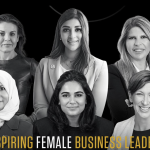[ad_1]
Although films in the 1900s and early 2000s mainly depicted disabled characters as vulnerable, powerless, evil, irrational, and even violent (i.e., The Hunchback of Notre Dame and The Elephant Man), disabled character portrayals have recently broadened. These more realistic characters have included such progressive roles as heroes, leaders, and even the subjects of love interests.
The importance of continuing to build upon this growing trend cannot be overstated since the portrayal of disabled people provides a crucial template for relatability, adjusted perception, awareness, and understanding to help change subjective views about people with disabilities. Yet, as convincing as these portrayals have recently become, there is much more work to be done.
For example, in Born on The Fourth of July (1989), military veteran Ron Kovic (Tom Cruise) dealt with emotional demons stemming from becoming a newly disabled person and learning to adapt to his environment in a totally different way. Although a well-received film, this representation is skewed since disabled veterans mentally tackle their disabilities in a variety of ways.
Additionally, it is still uncommon to see romantic stories about disabled portrayals, providing a misguided perception that disabled people cannot be intimately romantic. For example, in the award-winning film Forrest Gump, Forrest’s (Tom Hanks) relationship with his best friend, Jenny Curran (Robin Wright) presented Forrest as not much more than a dopey friend and protector. Although the two had a short sexual relationship, the promise of romantic bliss (success, marriage, family) escapes them, implying that a disabled person like Forrest would be limited in attaining long-term happiness.
Fortunately, the disability community, itself, has been stepping up to provide platforms for disabled talent to flourish. For example, Marilee Talkington, a veteran actress with low vision and theatrical director at Access Acting Academy (AAA), offers visually impaired professionals an opportunity for live theater training, thereby benefiting from displaying their skillset in front of an audience.
Further, many disabled filmmakers who have paved their way in the media industry are providing inspiring examples of success. One such filmmaker is James Lebrecht (filmmaker, sound designer, and activist). He directed alongside Nicole Newnham, in creating Crip Camp, a film that was nominated for an Academy Award. It directly exposed central problems around the lack of disability rights, friendships established over common objectives, and critical players who fought for American Disability Accommodation (ADA) laws and rights. The list of Crip Camp participants can be found on IMDB and is available on Netflix.
ADA30 Production has also opened a new platform for creating creative content from pre-production to post-production with a 100% cast, crew, and social media team who identify as disabled or deaf. The organization has thus far delivered the following shows: ADA30 Lead On: Celebration of Disability Arts, Culture, Education & Pride, National Disability Employment Awareness Month (NDEAM) in October 2020; Black Future Month: Legacy, Present & Afro-Futurism in March 2021. The ADA30 Production team of ADA30 Lead On: Celebration of Disability Arts, Culture, Education & Pride, was the recipient of the 2021 Audience Honors Shorty Award on Facebook Live for its social activism and social good campaign. ADA30 Production is now in its third year of production and is looking to expand into new creative content.
Easterseals Disability Film Challenge, Reelabilities is yet another organization that offers disabled filmmakers a chance to submit their film content for award competitions. All film submissions are original content creations by disabled filmmakers only.
All of these contributions have motivated the media industry to switch gears for a fresh perspective by including disabled artists and filmmakers to provide credible illustrations, including readily available technical viewing options (audio description, caption, and American Sign Language (ASL). Additionally, disabled talents’ success in winning awards has sent a powerful message that times have changed for viewers and the ways entertainment is presented.
It is important that the media industry continues to increase its representation of disabled characters in a relatable way that reflects their true life experiences, while enabling new disabled artists emerge.
About the Author: Trelanda Lowe is a fellow with The Loreen Arbus Accessibility is Fundamental Program, an inaugural fellowship created to train women with disabilities as professional journalists so that they may write, research and report on the most crucial issues impacting the disabilities community. Trelanda is also the mother of one child, a graduate student at Mount Saint Mary’s University studying Visual Effects, and is a post-production supervisor with ADA30 Production, screenwriter, photographer, public speaker, disability advocate, and fitness fanatic.
[ad_2]













ky5vg5